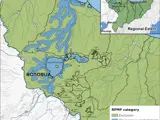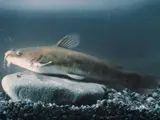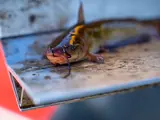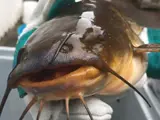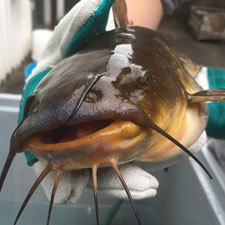 Catfish (Brown bullhead)
Catfish (Brown bullhead)
Common name: Catfish (Brown bullhead)
Botanical name: Ameirus nebulosus
Management programme: Exclusion, Progressive Containment
Where are they originally from?
Brown Bullhead catfish originate from North America and were first brought to New Zealand in the late 1800s. Catfish have no known predators in New Zealand and can survive out of water for up to 48 hours, making them even more capable of invading new areas.
Why are they a pest?
- Their adaptability and tolerance to a wide range of conditions means that they have the potential to establish in most water bodies.
- They are carnivorous and use their barbells (whiskers) to probe along the bottom for insects, crustaceans, molluscs, and small fish.
- Koura (freshwater crayfish) and other taonga species are preyed on by catfish.
- They are highly tolerant to poor water quality and contribute to water quality decline as they feed along the lake bottom, disturbing sediment.
- Catfish can produce up to 6,000 offspring in a season.
Where are they found?
- They were first recorded in Lake Taupo in 1985.
- In the Bay of Plenty they were first discovered in Lake Rotoiti in 2016 and then in Lake Rotorua in December 2018.
- Accidental introductions via boat trailers and especially eeling nets is contributing to the spread of this species around New Zealand.
- Catfish spawn in shallow depressions in the shallows. The male guards and fans the eggs and larvae during development.
What do they look like?
- They have eight distinctive barbells around their mouth, which have the appearance of a cat’s whiskers, relatively small eyes, and smooth skin.
- The leading edge on their dorsal and pectoral fins has a sharp venomous spine.
- They grow between 200-500mm in length.
- They have no scales - their skin is thick and leathery with a layer of mucous.
What are the rules?
Catfish are both Exclusion and Progressive Containment pests. Please refer to the map below to identify which areas these categories relate to.
Exclusion
Exclusion pests are not known to be present in the Bay of Plenty region, or in parts of the region. The Bay of Plenty Regional Council is responsible for managing new incursions into the region. Action may be required from landowners or occupiers to support a control operation.
Progressive containment
Progressive Containment species are pests which the Council aims to prevent from spreading, reduce the distribution, or eradicate within parts of the region over time. Landowners or occupiers are responsible for the control of Progressive Containment species on their property. Council may enforce the control of these pest species.
Rules require land occupiers to destroy all catfish in any pond or waterway (eradication will be led and funded by the Bay of Plenty Regional Council).
It is an offence under sections 52 and 53 of the Biosecurity Act 1993 to sell, offer for sale, display, release, move or breed catfish in the Bay of Plenty region. Serious penalties are associated with distributing catfish in waterways.
How do you get rid of them?
The Bay of Plenty works with Te Arawa Lakes Trust who have established a community based, volunteer netting program to remove catfish from Lake Rotoiti and Lake Rotorua. If you are interested in joining this program, please contact Bay of Plenty Regional Council who will put you in touch with the Te Arawa Catfish Killas.
The option of using a biological control to significantly reduce catfish numbers is also being investigated. For more information on the project visit the Catfish Population Control project page.
Removal of fish from waterways is difficult and requires expert advice. For advice, or to confirm the identity of a fish, call Bay of Plenty Regional Council on 0800 884 880 or email info@boprc.govt.nz
Images

